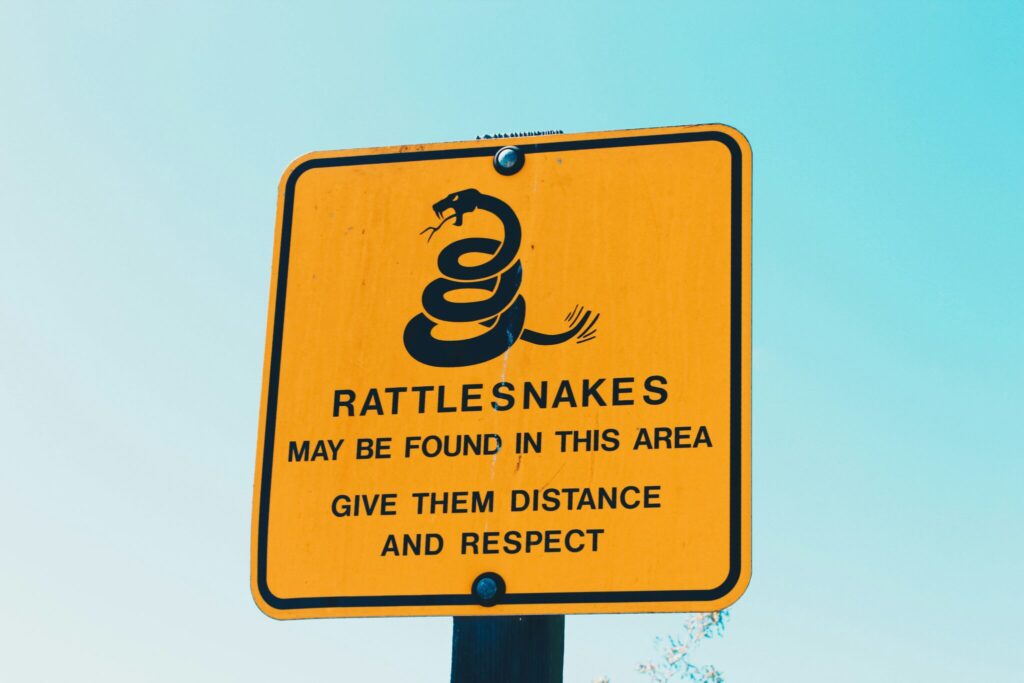Double Tap: Rattlesnake Envenomation
As we start to get into summer months, outdoor activities and adventures become more appealing. Who is better to tag along with than your furry friend? Unfortunately, pets aren’t the only ones enjoying the summertime warmth. Rattlesnakes start to become more active and enjoy some of the same trails and spaces we do. Read further to learn how you can best identify and treat rattlesnake bites at your practice.
Identifying Rattlesnakes
You can identify a rattlesnake by the sound of their rattle or their triangular shaped head. On average, they are 2-5 feet long with a rattle made up of hollow segments of keratin. Rattlesnakes are oftentimes difficult to spot in their natural surroundings due to their markings and sounds. Sometimes their rattle’s sound can be drowned out by the sound of rustling leaves, twigs snapping or moving through brush. Often, owners are only aware that something happened because their pet let out a yelp.
California is home to roughly 7 different species of rattlesnake. Some rattlesnakes have “Type A” venom, like Western Diamondback rattlesnakes ( Crotalus atrox), others have “Type B” venom, and some even have both, like Mojave rattlesnakes (Crotalus scutulatus).
Identifying Bites: Type A Venom
Type A venom is comprised of peptides and neurotoxic enzymes. These work to shut down the nervous system by disrupting communication between neurons. The onset of clinical symptoms is much more rapid with these envenomations. Patients bitten by Type A venom will come in lateral and display signs of neurologic dysfunction. These patients can experience seizures, respiratory depression and ascending paralysis. Type A venom patients usually require more extensive hospital stays, which may require the utilization of a ventilator for an extended period. These bites are harder to identify as the site does not swell or bruise as much as Type B venom.
Identifying Bites: Type B Venom
Type B venom is a hemotoxin that can cause hemolysis, coagulopathies, thrombocytopenia, tissue damage and necrosis. While symptom onset is not as rapid as Type A, bites are significantly more painful, as the hemotoxin destroys surrounding tissue, causing significant inflammation.
Treating Rattlesnake Bites
Owners may not realize their pet was bitten by a rattlesnake, so it is important to get a thorough history during an exam and check patient vitals. If the patient is in critical condition, you should stabilize the patient, get an IV catheter in place, collect blood samples and administer pain medications.
Antivenin Transfusion
If the owner knows or strongly suspects that the pet was bitten, the doctor may want to start an antivenin transfusion immediately. The sooner the patient receives the transfusion, the better the prognosis, so it is best to hospitalize the patient immediately. Luckily, there are several antivenins that treat both kinds of venom and are regularly carried in most emergency veterinary hospitals. These antivenins are transfused over varying times, on average anywhere from 30 minutes to an hour. Be sure to read the manufacturer’s instructions carefully and follow the direction of your supervising doctor.
It is important to monitor your patient closely to ensure they are tolerating the transfusion. Be sure to alert your attending doctor if any tachycardia, petechiae, change in mentation, nausea or elevated temperature occurs, as these may be the first signs of a reaction. Your patient may require additional medications and the rate of the transfusion to be decreased or halted altogether.
Depending on the severity of the bite, size of the pet and other factors, pets might require more than one unit of antivenin. It is important to treat any secondary complications and monitor the progression of symptoms.
Treating the Wound Site
Do your best to identify the location of the bite and monitor for swelling. Most bites occur on the face and extremities, so depending on the location, the amount of swelling alone can cause life threatening complications. The wound should be cleaned thoroughly, pain medications administered, and blood values monitored continuously while the patient is recovering.
Discharging a Rattlesnake Bite Case
Upon discharging, be sure to relay the importance of complying with the recommendations of their veterinary provider and allowing the pet time to recover. The recovery process can take several weeks, and it is important to allow their pet to rest and prevent overexertion. Depending on the doctor’s recommendations, antibiotics, anti-inflammatory and pain medication may be sent home with the owner. Going over discharge instructions and providing a written copy is important to ensure the patient is receiving appropriate after care.
In Conclusion
Rattlesnakes are typically most active during the day; however, it’s important to alert pet owners they can still be out towards the evening. Some measures pet owners can take to avoid a run in with a rattlesnake include staying on well-traveled trails, not allowing pets to run through areas with tall grass, keeping dogs on leash, and keeping pets from investigating areas around rocks or under bushes. Be on the lookout for potential bite symptoms at your hospital and stay up to date on antivenin administration and monitoring.

